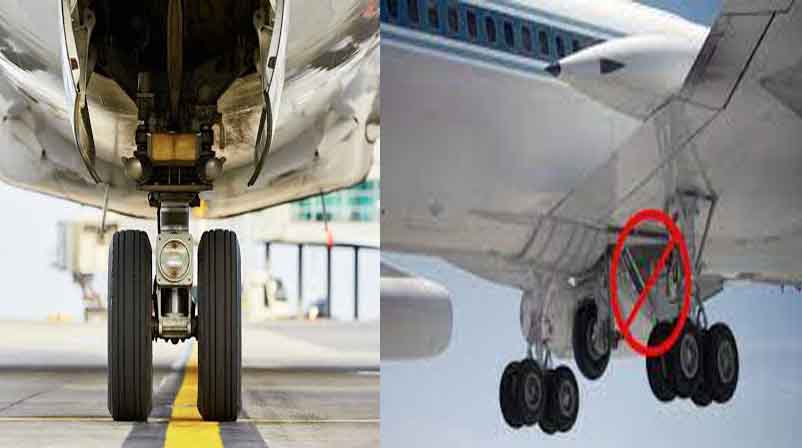There are reports that a KLM flight that left Lagos to Amsterdam, Netherlands on the 19th of April, 2021 was found to have a body of a man inside the landing gear. It is thought the man stowed away on the flight, where he perished from hypothermia.
There are occasionally cases of people trying to transit between countries as stowaways, usually in a bid to seek asylum on arrival. However, as these daring individuals often travel outside the pressurized envelope of the plane cabin, the outcome can be disastrous.
A KLM flight arrived from Lagos into Amsterdam Schiphol on Monday 19th April with one extra passenger onboard. A man was discovered in the landing gear wheel well at the Dutch airport. Sadly, he had passed away during the flight.
A spokesperson for the Royal Netherlands Marechaussee, one of two national police forces in the country said that the man had holed up in the wheel arch of the plane. The low temperatures have presumably been fatal to him during the flight.
The police further said that they were investigating the incident to confirm the man’s identity as well as the cause of death. Almost seven hours in the air.
The flight is a regular five-weekly service from Lagos to Amsterdam, almost always flown by one of KLM’s six A330-200s. It was PH-AOD operating the route, a 15-year-old aircraft with 30 business, 35 extra legroom economy, and 178 economy seats. It’s likely the flight was operating very lightly loaded, given the restrictions on travel to and from the Netherlands right now.
However, one passenger did not occupy any of the seats onboard. Rather he managed to access the aircraft and hide in the wheel well of the plane’s landing gear. While it’s a miracle he didn’t fall from his hiding place, the individual would have been subjected to extreme conditions during the flight.
In total, the aircraft flew for almost seven hours as it transited across Africa and into Europe. Most of that time was spent cruising at approximately 37,000 feet, where temperatures would have been in the region of minus 70 degrees F (-57 degrees C). Up there, the air would have been so thin that the person would likely pass out in minutes.
As such, it’s not hugely surprising that the individual did not survive the flight. However, it’s no less distressing for the crew and airline to deal with, and equally sad for the man’s family and friends.
While many landing gear stowaway stories end in tragedy, some do not. In February this year, a 16-year-old boy was found clinging to the landing gear of a Turkish Airlines aircraft when it arrived at London Stansted. He was alive. While it wasn’t certain if the boy had traveled all the way from Kenya, it was clear that he had survived at least part of the journey in this manner.
The plane’s own machinery can sometimes help the survival of these stowaways, at least for a short time. The heat radiating from the wheels following takeoff can help moderate the temperature, reducing exposure to around minus 30 degrees F (-34 degrees C) for the initial stages of the flight.
In terms of oxygen starvation, evidence shows that the body is capable of entering a sort of state of hibernation. The combination of low oxygen and extreme cold can be likened to a person falling into a frozen lake – they may have no pulse when pulled out, but could be revived.
According to the FAA, there have been 105 known cases of stowaways traveling in landing gear and other external locations since 1947. The survival rate is around one in four, with survivability reducing the longer the flight takes to travel. However, the FAA notes that this survival rate could well be much lower as some may have fallen from the wheel well during transit, without anyone realizing.



